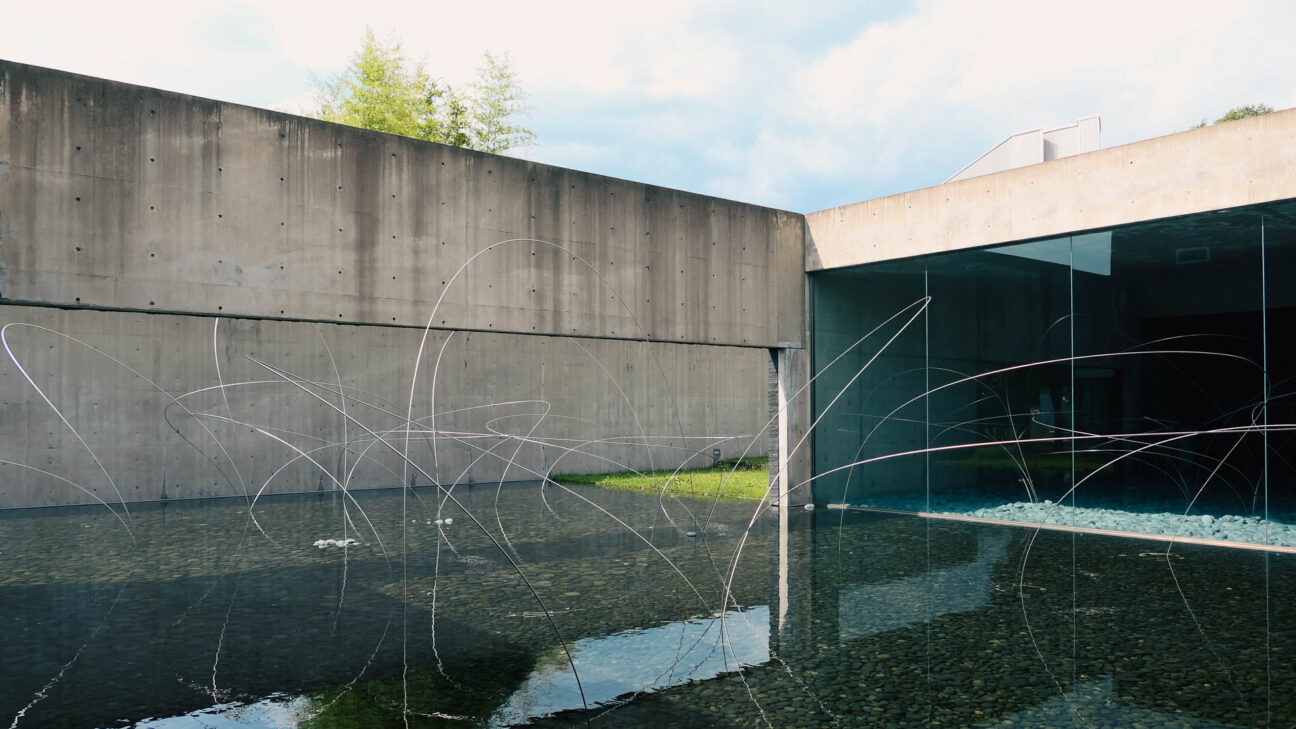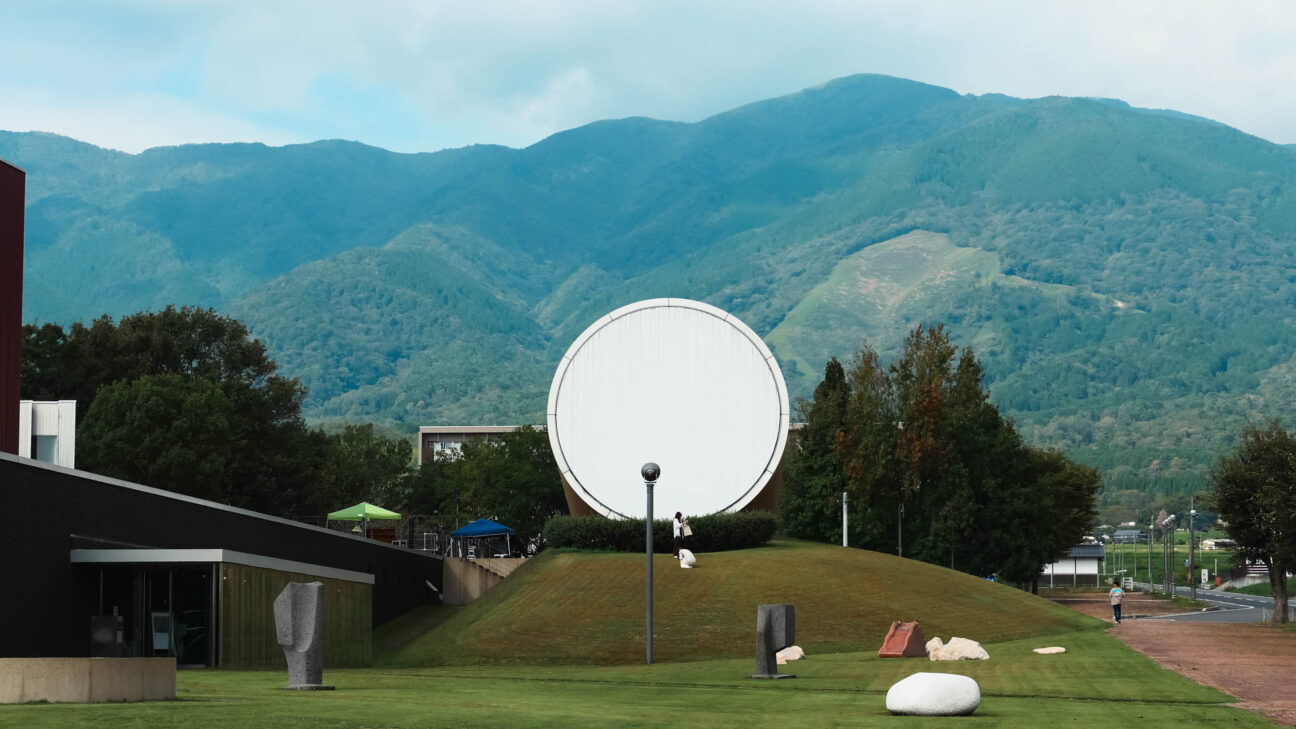Nagi MOCA. Museum of Contemporary Art, Japan
Nagi MOCA (1994) was designed by the worldwide architect Isozaki Arata with collaboration of the artists who created the works specifically for the museum. The artists are: Aiko Miyawaki, Kazuo Okazaki, Shusuka Arakawa (1936-2010) and Madeline Gins. The museum consists of 3 exhibition spaces called the sun, the moon and the earth.
Aiko Miyawaki
Utsurohi sculpture (EARTH) at Nagi MOCA express a unfettered spirit, that is what the Chinese call ch’i. The ancient Chinese believed everything to be composed of ch’i, and this belief was codified in Huai nan-tzu, a compilation of astrological precepts. According to this work, there was first emptiness, then in that emptiness the cosmos was born, and in that cosmos were born ch’i.
The ch’i that was light and transparent thinned and became heaven, and the ch’i of yin and yang were born, and from them arose all things under heaven.
“I wish to create a thing that has shed the weightiness of sculpture and is as frees as a bird in flight. My main purpose is to relate to the land and water of Nagi.” Aiko Miyawaki
Kazuo Okazaki


The space plan is a single straight line and a shallow arc. The straight line of the building points to the moon at 10 pm on the Autumn Equinox.
The artwork – “Hisashi – that which supplements” -consists of two curved granite benches set against the curved wall with two small sculptures on the facing flat wall. The sculptures are made by pouring plaster so that it overhangs an edge. When dry it is removed and hung on the wall.

Shusuka Arakawa and Madeline Gins
A massive cylinder – Sun – (aligned north to south) set on a slope. The artwork by Arakawa and Gins is simply titled “Heart” and is entered through a small room on the walls on which are snapshots of Nagi residents.
The famous Zen garden at Ryoanji Temple in Kyoto is here represented. The fact that it is curved around the cylinder and that a rotated copy of it is on the opposite side makes it most disorienting.
Place/ Nagi MOCA, Japan
ft/ Kate Zaniewska















